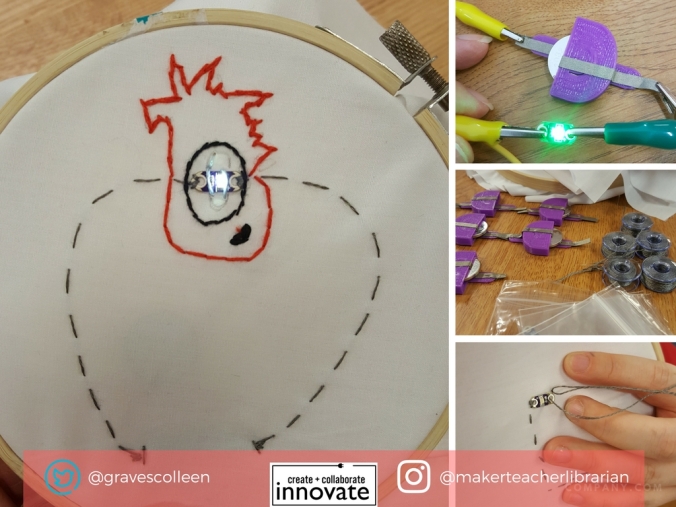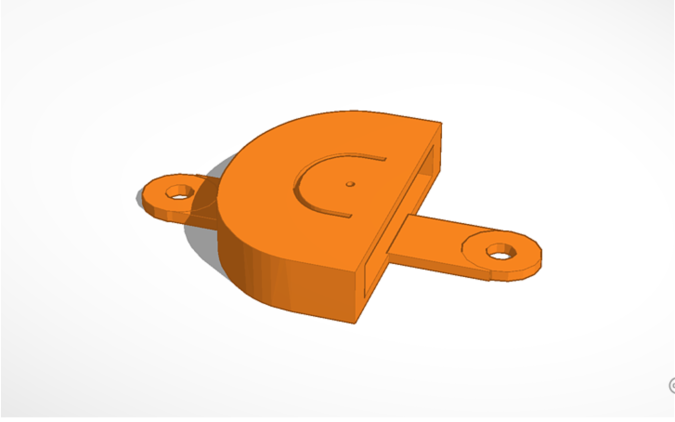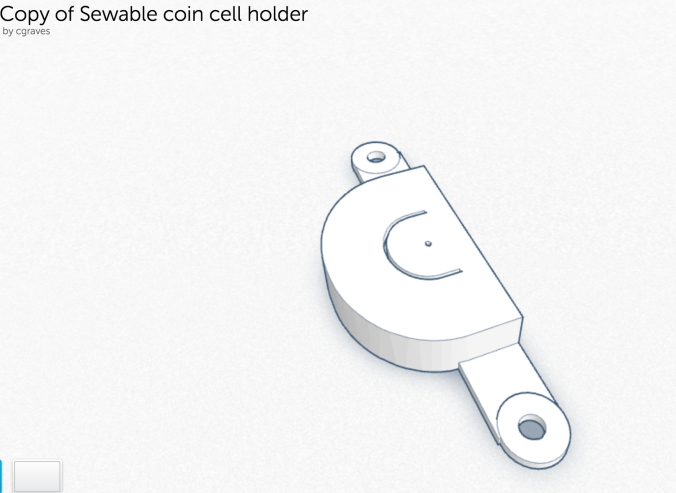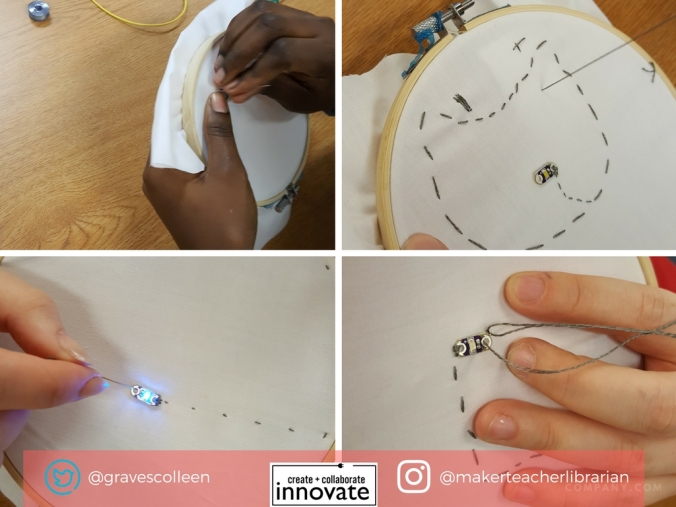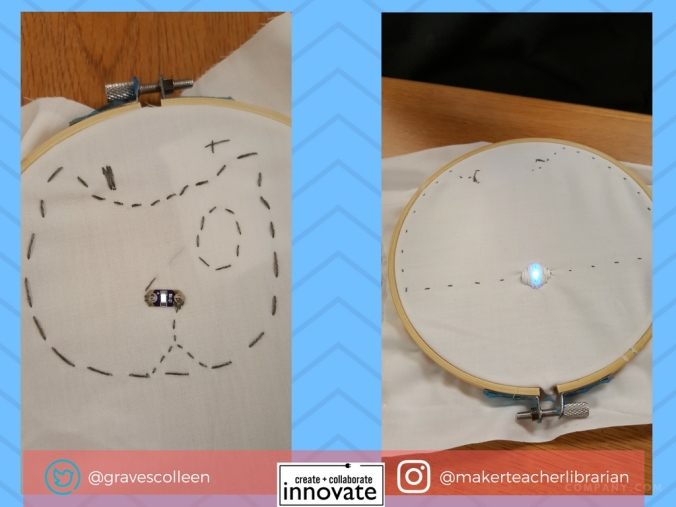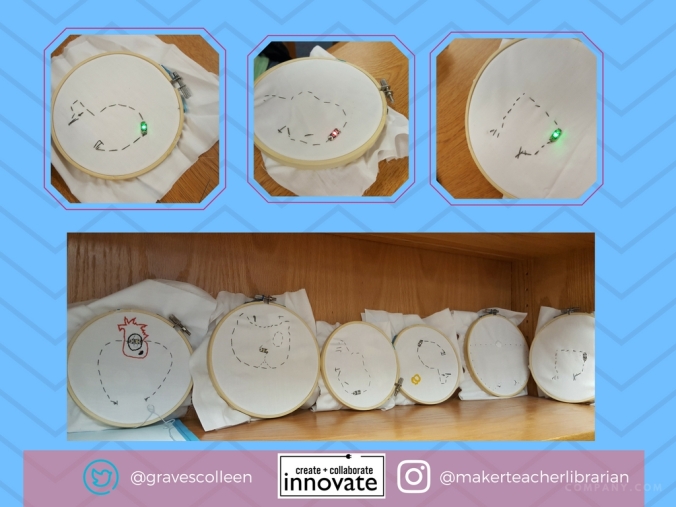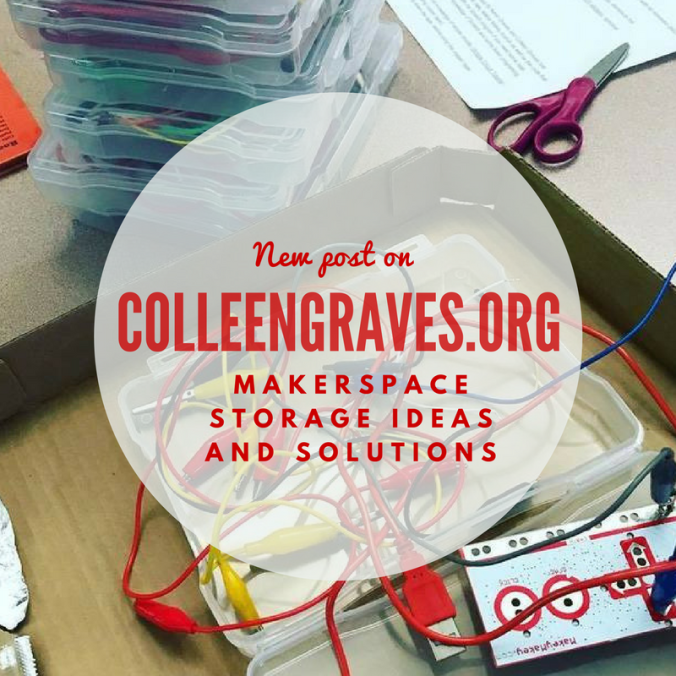
I’ve had a lot of questions about storage for maker tools, so I wanted to compile a list of maker storage solutions I’ve tried over the years.
Microcontroller Storage Solutions
Arduinos, Micro:bit, and Makey Makey are awesome tools, but they don’t come in user or library friendly storage containers. Lately, I’ve been buying photo storage boxes to contain my microcontrollers in a compact and clear solution. What I love about these Iris photo keepers is that 6 of the the containers fit inside another clear unit. Plus, you can easily spot that you have your Makey Makey, alligator clips, and USB cable when students hand the kits back.
If you have some old clear VHS cases, they are also perfect for storing Makey Makey and accessories! I saw Diana Rendina do this at FETC last year, and I almost looked for back stock so I could put all of my Makey Makeys in old VHS boxes!
However, you might want to store things like Play-doh inside your Makey Makey kits, if so a larger storage box works great too. Check out Bill Steinbach’s storage solution:
I’m use these photo boxes to store table supplies for workshops too. Below is a kit for creating paper circuits during a Makey Makey Invention Literacy workshop. These little boxes are great for storing rolls of copper tape, drawing pencils, foil, batteries, and coincell battery holders.
The Iris Photo Keeper sized 4X6 is also good for Micro:bit and accessories. This size is perfect for the cable, controller, and battery holder. If you want to store more accessories, you’ll want to go a box size up.
Consumable/Recyclables Maker Storage
At Ryan High School with the help of my ITS, Leslie Terronez, we organized all of our materials in these large tubs and labeled accordingly. (See more about the process in this previous post.)
These tubs helped students find things quickly. I ended up moving all of this organized chaos to the “maker classroom” side of the library at Ryan, and then used these huge shelves behind the circulation desk for “in-progress” projects. During our Invention Literacy projects with 10th grade, I quickly realized that I need to move our consumables far away from our non-consumable items like knitting needles, Raspberry Pi components, etc. I needed all recyclable and prototyping material far away from things I didn’t want torn up. During that project, students sawed knitting wooden needles in half to make catapults! I didn’t get upset with them for their creative reuse, but oh my! If only I’d remembered Krissy Venosdale’s Maker Confession we’d discussed at SXSWedu last year!
At my new library, I have mostly only recyclables and and consumables. So I keep my Micro:bit and Makey Makeys near our computers and I have a wall of recyclables clearly labeled for students to use in projects. I’ve also learned to cut my cardboard into square and rectangle sheets so it’s a little more accessible for my elemakers.
It’s handy to save round things in a bin labeled “round-wheel like things”, cardboard tubes, interesting plastic, soft things, pom poms, straws, popsicle sticks, etc in your consumable area. However, with younger students remember to tell them not to be wasteful. You may even have to limit how many materials they can use. During our Micro:bit pet project, Mrs. Honea and I saw the kids decimate all of my sorted reuse materials in 2 minutes! Plus, they only gathered them all and then had to put them back. It’s important for students to understand that they do not have HOARD materials because they will stay in your storage tubs for further use.
Storing Works In Progress
Last year I noticed that it was getting harder to keep “in progress” projects organized on the shelves. So I decided to buy tubs that students could label with their names and an expiration date. If they were working on a project of their own, they needed to write an expiration date. If they were working as a class, they just needed to label the tub with their names. At Ryan I kept these behind the circulation desk. At my new school, I keep in progress projects on empty shelves in my office so idle hands do not find them and destroy them. Read more about the in-progress shelves in this post I wrote last year.
During the “works in-progress” clean up, I also tried out making a re-purpose it bin. This seemed like a good idea for repurposing old projects, but not many of my high school students would go through it to look for parts. It might work better in elementary, since the kids really love scavenging items. Only time will tell!
The red tubs work great for in progress work when I have one whole class working on a project. For open maker time projects, these little containers with lids work a little better. An expiration date is necessary for free lance projects because sometimes kids abandon projects for a long time. I can’t tell you how many times a students would come back months after they started a project. It’s always difficult to tell them you’ve recycled their work, but it becomes a little easier when you have an expiration date on the bin!
Skinny containers with lids are great for storing sewing and sewing circuit projects!
Throwback to Lamar Middle School
I started the in-progress shelves when I was working at Lamar. At the time, it was just empty shelving for student projects. When I stored projects like this at Ryan, inevitably someone would mess with another student’s project. That’s why it’s important to use bins or storage tubs to keep work separated and safe.
Need More Ideas for Makerspace Storage?
Visit your local re-use stores to get more great storage ideas! Scrap Denton had great ideas for re-purposing old containers for consumables supplies. At Ryan, I used biscotti tubs that a teacher gave me to store consumables like popsicle sticks and wooden dowels. To keep your area looking neat, make sure your up-cycled containers are all matching! You can reuse tennis ball containers for ribbons, popsicle sticks, etc! While you are at your re-use store, be environmentally friendly by picking up more supplies for your makerspace instead of buying all brand new materials.
Pinterest always has great one trick ideas too! I found this great way to organize thread by hot gluing golf tees to the top tub of tool box drawer.
What are some of your favorite storage ideas? See my previous post about makerspace storage for ideas on storing littleBits, Sphero, and more!

